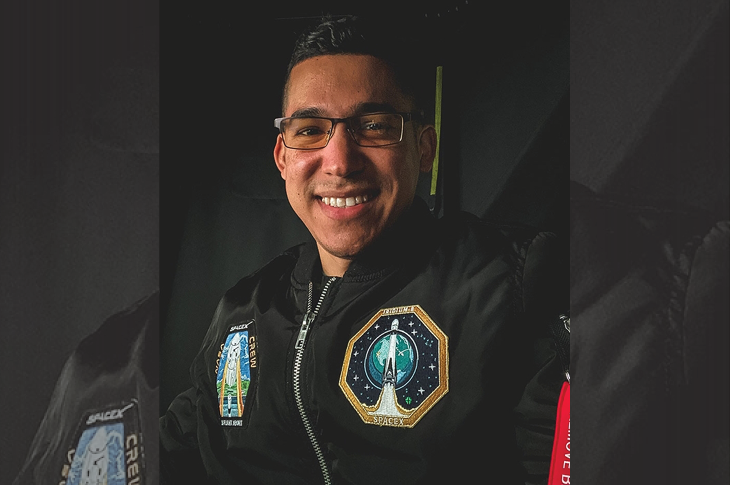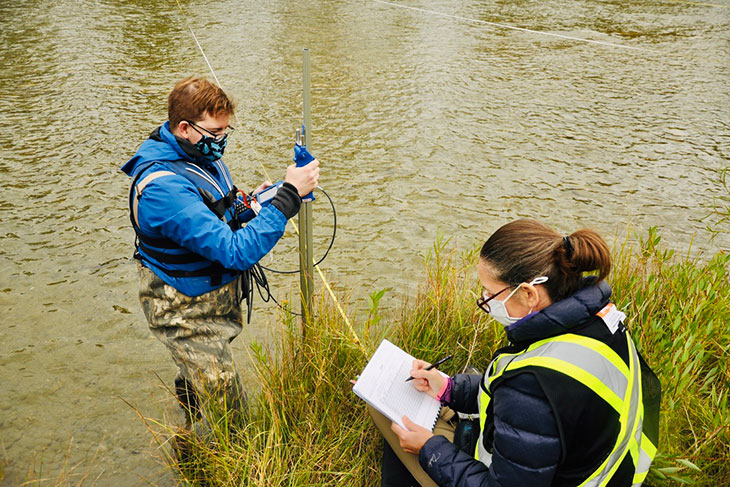How to change careers (and tools to help)

Time for a career gut check. Are you due for a switch-up?
Here are some signs you might be:
- You no longer feel challenged or inspired by your work.
- Your interests are pulling you in another direction.
- You light up at the thought of making a change.
Lara Schuelke has built her career around helping others map out their future. A member of SAIT’s Career Advancement Services team, she is also a certified career development practitioner.
“I help experienced professionals, new Canadians and post-secondary grads transition to new and varied career pathways,” says Schuelke.
The hardest part of changing careers is choosing to do it. Once you’ve decided to take the leap, use Schuelke’s tips and helpful tools to find what’s next.
Not necessarily looking for a change but curious about what’s out there?
Everyone can benefit from career exploration.
“Gaining new insights and credentials can often assist you in making your current career more gratifying,” says Schuelke.
I am passionate about helping people develop their career pathways and navigate their educational journeys.
Tip #1: Check in and get to know yourself
Choosing a new future means saying goodbye to another, and goodbyes can be tough. Mourning this change is normal.
“Check in on your well-being and allow yourself time to grieve this career ‘loss,’” says Schuelke.
Once you’re ready, shift your focus to better understanding yourself — what you bring to the table and what you want going forward. Ask yourself the following:
- What are your skills?
- What are your values?
- What are your priorities?
- What do you want for your future?
- What impact do you want to make in your community or the world?
Write down your answers — they will help narrow down your career selection.
🛠 Toolkit
- SAIT’s Career Coach tool provides career suggestions based on a career self-assessment.
- Alis provides exercises and quizzes to help you get to know yourself, then links you to related occupational profiles.

Shifting career gears: From accounting to SpaceX
Gonzalo Villasmil had never heard of the non-destructive testing profession until his stepfather suggested it. Now he’s a non-destructive testing inspector with SpaceX.
Tip #2: Explore what’s out there
The good news: career options are limitless.
The bad news: career options are limitless. And the thought of combing through thousands of job prospects would overwhelm anyone.
Once you understand your strengths, values and what makes you tick (see tip #1), viable career options will begin to reveal themselves. Narrow your focus in on them, then go deeper to learn more about each occupation. Here are some prompts to get you started:
- What’s the current state of the industry? Are changes coming?
- What is the labour market like for this occupation?
- What specific skills and credentials are required to do the work?
- What companies within this field stand out to you? Where can you actually see yourself working?
- Is the career option in alignment with your skills, values, priorities and vision for the future (see tip #1)?
🛠 Toolkit
- Labour market information is data that tells you which industries are hiring, how easy it is to find work, what roles are in high demand and more. The OCCinfo section on alis is a great starting point. The Government of Alberta also provides job market forecasts, trends and helpful stats.
- Find data on wages, employment and training required (with direct links to SAIT’s relevant programming) using the Careers section of SAIT’s Career Coach tool.
- Use the National Occupational Classification to learn about an occupation’s main duties, educational requirements and other helpful info.

Still unsure about your next move?
The Best Careers You Never Knew Existed podcast dives into exciting opportunities and cutting-edge trends in Alberta’s changing career landscape.
Listen nowTip #3: Network, network, network
Networking offers many benefits, and you should start in your career exploration phase (see tip #2).
“Talking to people in jobs you’re interested in will help you define your path forward,” says Schuelke.
Candid conversations will shed light on what would be a good fit for you and clarify educational requirements.
Another perk of making new connections: when your network grows, so does your awareness of job opportunities.
🛠 Toolkit
- Connect with SAIT alumni working in the fields you’re interested in using LinkedIn.
- SAIT Career Advisor Sean Leeson shares ways to make meaningful connections and tips for networking effectively in the “Networking essentials” episode of the What Works.
- Schuelke breaks down how to source and connect with meaningful contacts, automate searches and make your profile shine in a “LinkedIn hacks” episode of What Works:
Tip #4: Get your education up to speed
Once you’ve landed on a new career path, you’ll need to work on building the knowledge and skills needed to successfully transition.
SAIT offers many learning pathways — from continuing education certificates, to short, stackable micro-credentials, to full-time diploma or degree programs.
Once you embark on your education, monitor your stress levels as you progress. SAIT offers a number of well-being resources for current students.
🛠 Toolkit
- SAIT’s Career Coach tool provides direct links to relevant SAIT diploma and degree programs for the job you want.
- Level up your skill-set with micro-credentials and continuing education.
- Once you’ve enrolled, sharpen your study skills and ease exam anxiety.
- Tap into well-being resources and services while studying at SAIT.

Shifting career gears: Evolving skills for an evolving economy
Having spent five years working in Nigeria’s financial sector, Dammy Oyekan came to SAIT to add to her existing skill set and found her fit in the Calgary tech sector.
Tip #5: Start the job hunt
Your credentials are on point and you’re ready to get to work. Time to find the right fit with the right organization:
- Utilize that network you’ve been building (see tip #3) for the inside scoop on up-and-coming opportunities.
- First impressions matter. Polish up your LinkedIn profile and write a resumé that’s sure to impress.
- Mastering job interviews is a skill — practice lots to build confidence.
🛠 Toolkit
- As a SAIT student or alumni, get help with your job search, have your resumé reviewed and schedule a practice interview with Career Advancement Services.
- Hear from experts on job search strategies, optimizing your resumé and nailing your next interview on SAIT’s What Works podcast.
- Check out the careers at SAIT.

Shifting career gears: From engineering to water management
After a hiatus from engineering to spend time at home with her kids, Jennifer was looking to get back into the workforce. Only this time, she wanted to set herself apart within an entirely new field.

Work will be different from now on.
So should your education. At SAIT, we’re championing change with tech-focused and industry-driven programs and courses to give you the future-proof skills needed for a rewarding career.
Learning for Life
We prepare students for successful careers and lives.
SAIT'S
2020-2025
Strategic plan

Oki, Âba wathtech, Danit'ada, Tawnshi, Hello.
SAIT is located on the traditional territories of the Niitsitapi (Blackfoot) and the people of Treaty 7 which includes the Siksika, the Piikani, the Kainai, the Tsuut’ina and the Îyârhe Nakoda of Bearspaw, Chiniki and Goodstoney.
We are situated in an area the Blackfoot tribes traditionally called Moh’kinsstis, where the Bow River meets the Elbow River. We now call it the city of Calgary, which is also home to the Métis Nation of Alberta.
